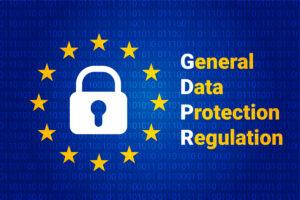Compliance Risk
Compliance risk refers to the potential for an organization to violate laws, regulations, industry standards, or internal policies and procedures. It arises from the failure to comply with applicable legal and regulatory requirements or the inability to meet ethical standards and best practices.
 Written by Erling Andersen
Written by Erling Andersen
Definition: Compliance Risk refers to the potential for an organization to violate laws, regulations, or industry standards. It encompasses the risks associated with failing to comply with legal and regulatory requirements, which can lead to financial losses, reputational damage, and legal consequences. Compliance risk management is a crucial aspect of governance, risk management, and compliance (GRC) programs.
Definition and Perspectives
Compliance risk can be defined from various perspectives:
From a legal standpoint, it pertains to the risk of non-compliance with applicable laws and regulations. This includes both national and international laws that govern specific industries, such as financial services, healthcare, and manufacturing.
From an organizational perspective, compliance risk includes the risk of not adhering to internal policies, procedures, and codes of conduct that an organization has established to govern its operations.
Moreover, compliance risk can also encompass the risk of violating industry standards and best practices, which are guidelines set forth by professional associations and regulatory bodies to ensure ethical and responsible behavior within a particular industry.
It is essential to understand that compliance risk is not limited to specific industries or sectors. Any organization, regardless of its size or nature of operations, is exposed to compliance risk. The complexity of regulatory environments and the evolving nature of laws make it imperative for businesses to proactively manage compliance risks. Failure to do so can result in severe consequences, including financial penalties. Also lawsuits, loss of business licenses, and damage to an organization’s reputation.

Historical View of Compliance Risk
The concept of compliance risk has evolved over time in response to changing regulatory landscapes and emerging global threats. Understanding the historical context helps us appreciate the significance of compliance risk in today’s financial and business environments. Let’s delve into the historical view of compliance risk:
The Early Years
In the early years of commerce, regulations focused primarily on financial stability and preventing fraud. Compliance requirements were relatively straightforward. Also centered on financial record keeping, transparency, and accountability. The primary objective was to safeguard the integrity of financial transactions and maintain public trust.
The Rise of Money Laundering
During the 20th century, money laundering emerged as a significant challenge. Criminal organizations sought ways to legitimize their illicit proceeds by disguising their origin. This led to the introduction of anti-money laundering (AML) regulations and the recognition of money laundering! as a critical compliance risk. Financial institutions were obligated to implement controls and reporting mechanisms to detect and prevent money laundering activities.
Expansion of Regulatory Frameworks
In the late 20th and early 21st centuries, compliance risk expanded beyond money laundering! to encompass a broader range of risks. The global financial system faced threats from terrorism financing. Also corruption, fraud, and other illicit activities. Regulatory frameworks evolved to address these risks, resulting in the introduction of additional compliance requirements.
Focus on Consumer Protection
In the aftermath of financial crises and scandals, there was a growing emphasis on consumer protection and fair treatment of customers. Regulators recognized the need to safeguard individuals and businesses from deceptive practices, mis-selling, and other forms of financial misconduct. Compliance risk expanded to include ensuring fair and ethical treatment of customers, adherence to product suitability standards, and transparent disclosure of risks.
Technology and Digital Transformation
The rapid advancement of technology and the proliferation of digital transactions introduced new compliance risks. The rise of online banking, digital payments, and virtual currencies necessitated the development of regulatory frameworks to address cybersecurity. Also data privacy, and the risks associated with emerging financial technologies. Compliance risk management now includes robust measures to protect customer data, prevent cyberattacks, and ensure the integrity of digital transactions.
Increased Focus on Global Standards
With the globalization of financial markets, there has been a greater emphasis on international cooperation and the harmonization of regulatory standards. Global organizations, such as the Financial Action Task Force (FATF), have played a pivotal role in establishing global AML and counter-terrorist financing standards. Compliance risk management has shifted towards adopting consistent international best practices and ensuring cross-border cooperation in combating financial crimes.
The Era of Non-Financial Risks
In recent years, compliance risk has expanded beyond financial risks to include non-financial risks. Regulatory frameworks now address a broad range of risks, including environmental, social, and governance (ESG) risks, human rights violations, and sanctions violations. Organizations are expected to comply with regulations related to climate change, diversity and inclusion, responsible investing, and other non-financial considerations.
In conclusion, the historical view of compliance risk reflects its evolution from a focus on financial stability and fraud prevention to a broader scope encompassing money laundering! consumer protection, digital risks, global standards, and non-financial risks. The ever-changing regulatory landscape and emerging threats necessitate proactive risk management and the adoption of comprehensive compliance frameworks to ensure the integrity, security, and ethical conduct of businesses in the modern world.
Practical Examples of Compliance Risk
To gain a better understanding of compliance risk in practice, let’s explore some real-world examples that highlight its implications and the challenges faced by organizations:
Example 1: Anti-Money Laundering (AML)
A financial institution conducts a customer due diligence review and identifies suspicious transactions involving large cash deposits and frequent transfers to offshore accounts. The organization initiates an investigation, files suspicious activity reports with the relevant authorities, and collaborates with law enforcement agencies to prevent money laundering. This example demonstrates the practical application of AML measures in detecting and combating illicit financial activities.
Example 2: Data Privacy Compliance
An e-commerce company operates in a jurisdiction with strict data protection regulations. To comply with privacy laws, the company implements robust data security measures, obtains explicit consent from customers for data collection and processing, and establishes procedures for handling data breaches. By prioritizing data privacy compliance, the organization safeguards customer information and maintains trust in its services.
Example 3: Anti-Bribery and Corruption (ABC)
A multinational corporation expands its operations into a high-risk jurisdiction known for corruption. To mitigate compliance risks, the company implements an anti-bribery and corruption program, conducts regular training for employees, establishes third-party due diligence procedures, and maintains accurate records to ensure transparency and accountability. This proactive approach reduces the risk of bribery and corruption within the organization.
Example 4: Sanctions Compliance
A global bank operates in multiple countries and must comply with international sanctions regulations. The bank implements a comprehensive sanctions compliance program that includes screening customer transactions against global watchlists, monitoring politically exposed persons (PEPs), and establishing procedures for handling potential sanctions violations. By ensuring compliance with sanctions requirements, the bank mitigates the risk of inadvertently facilitating illicit activities.
Example 5: Environmental Compliance
A manufacturing company operates in an industry with strict environmental regulations. The company invests in sustainable practices, implements waste management systems, conducts regular environmental audits, and ensures compliance with emission standards. By prioritizing environmental compliance, the organization minimizes its ecological footprint and demonstrates a commitment to sustainability.
These practical examples illustrate the diverse nature of compliance risks and the measures organizations take to manage them effectively. Compliance risk management requires a proactive and multifaceted approach that aligns with specific regulatory requirements and industry best practices.
Statistics of Compliance Risk
Here are some statistics highlighting the significance of compliance risk:
- According to a survey by PwC, 55% of CEOs worldwide are concerned about the impact of overregulation on their organizations’ growth prospects.
- A study by Thomson Reuters found that regulatory non-compliance costs companies an average of 2.65% of their annual revenue.
- In 2020, the US Securities and Exchange Commission (SEC) collected over $4.68 billion in enforcement actions, emphasizing the financial consequences of non-compliance.
- The Ponemon Institute’s Cost of Cyber Crime study revealed that the average cost of non-compliance with data protection regulations is $14.8 million per year for organizations.
- According to the Association of Certified Fraud Examiners (ACFE), organizations lose approximately 5% of their annual revenue to fraud, highlighting the financial impact of non-compliance.
Incidents
Several high-profile incidents have demonstrated the consequences of compliance failures:
- The Volkswagen emissions scandal in 2015, where the company manipulated emissions tests to meet regulatory standards, resulted in billions of dollars in fines and reputational damage.
- The Wells Fargo account fraud scandal in 2016, involving the creation of unauthorized customer accounts, led to significant regulatory fines and damaged the bank’s reputation.
- The Theranos scandal in 2018, where the healthcare technology company misled investors and regulators about its blood-testing technology, resulted in legal actions, dissolution of the company, and criminal charges against its founder.
- The GDPR non-compliance cases after the implementation of the General Data Protection Regulation (GDPR) in 2018, with numerous organizations facing substantial fines for mishandling personal data.
- The Boeing 737 Max aircraft crisis, where the failure to disclose critical information about the aircraft’s safety features led to tragic accidents and intense regulatory scrutiny, resulting in financial losses and reputational damage for the company.
The Future of Compliance Risk Management
The future of compliance risk management involves addressing emerging challenges and embracing technological advancements. Organizations need to stay proactive and adapt their strategies to effectively manage compliance risks in an ever-changing regulatory landscape.
1. Regulatory Changes
Regulatory frameworks will continue to evolve, driven by emerging risks and changing global dynamics. Organizations must closely monitor regulatory developments, assess their impact on operations, and adapt their compliance programs accordingly. Staying abreast of regulatory changes and implementing proactive measures will be crucial in mitigating compliance risks.
2. Technology and Automation
Advancements in technology present both opportunities and challenges for compliance risk management. Automation, artificial intelligence, and machine learning can streamline compliance processes, enhance risk assessment capabilities, and improve monitoring and detection of suspicious activities. Organizations should leverage technology to automate routine compliance tasks, analyze vast amounts of data, and identify patterns and anomalies that may indicate potential compliance risks.
3. Data Analytics and Predictive Modeling
Effective compliance risk management requires robust data analytics and predictive modeling capabilities. By leveraging data-driven insights, organizations can proactively identify compliance risks, detect emerging trends, and make informed decisions. Predictive modeling techniques enable organizations to anticipate potential compliance issues, assess their impact, and take preventive actions.
4. Cybersecurity and Data Privacy
Cybersecurity threats and data privacy breaches pose significant challenges to compliance risk management. As organizations rely more on digital systems and handle large volumes of sensitive data, protecting data integrity and ensuring privacy become critical. Implementing robust cybersecurity measures, encryption protocols, and secure data storage solutions are essential to mitigate compliance risks associated with data breaches and unauthorized access.
5. Global Cooperation and Harmonization
With increasing globalization, compliance risks transcend borders. International cooperation and harmonization of regulatory standards play a crucial role in addressing compliance risks effectively. Collaborative efforts between regulatory bodies, industry associations, and organizations can facilitate the sharing of best practices, exchange of information, and alignment of compliance frameworks, ensuring consistent compliance standards worldwide.
6. Continuous Training and Education
Investing in comprehensive training and education programs is vital for building a strong compliance culture within organizations. Ongoing training helps employees understand regulatory requirements, ethical obligations, and the significance of compliance risk management. By fostering a culture of compliance, organizations can promote ethical behavior, minimize compliance breaches, and enhance their overall risk management framework.
Explore the Power of Kyros AML Data Suite
As organizations navigate the complexities of compliance risk management, leveraging advanced technological solutions becomes imperative. Kyros AML Data Suite empowers AML professionals with cutting-edge tools and capabilities to streamline compliance risk management efforts.
With its intuitive user interface, comprehensive features. Also advanced analytics, Kyros AML Data Suite helps organizations identify, assess, and mitigate compliance risks effectively. The platform enables automated transaction monitoring, risk scoring, and real-time alerts, ensuring timely identification of potential compliance breaches.
Kyros AML Data Suite also offers robust reporting and audit trail functionalities, enabling organizations to maintain thorough documentation, demonstrate regulatory compliance, and respond effectively to regulatory inquiries and audits.
By harnessing the power of data-driven insights and automation, Kyros AML Data Suite helps organizations enhance their compliance risk management framework, reduce manual effort, and proactively address emerging risks.
Experience the comprehensive capabilities of Kyros AML Data Suite today and elevate your organization’s compliance risk management practices.
Conclusion
Compliance risk is a critical concern for organizations operating in various industries. The consequences of non-compliance can be severe, ranging from financial penalties to reputational damage. By proactively managing compliance risks, organizations can safeguard their operations, protect stakeholders’ interests, and maintain trust in the marketplace.
Embracing technological advancements, staying informed about regulatory changes, and fostering a strong compliance culture are essential for effective compliance risk management. Kyros AML Data Suite offers innovative solutions to help organizations navigate the complexities of compliance risk and ensure regulatory compliance. Explore the power of Kyros AML Data Suite today and empower your organization with advanced compliance risk management capabilities.
Share article on




